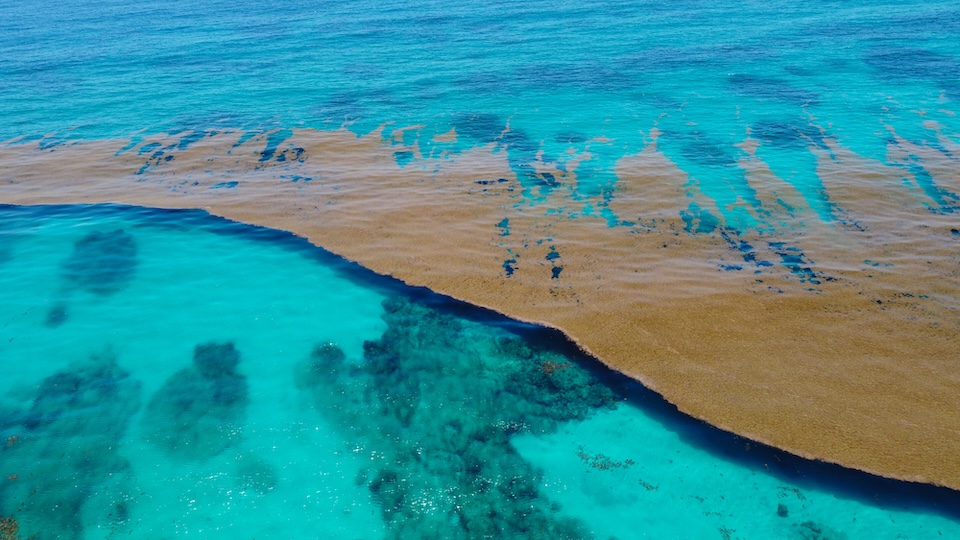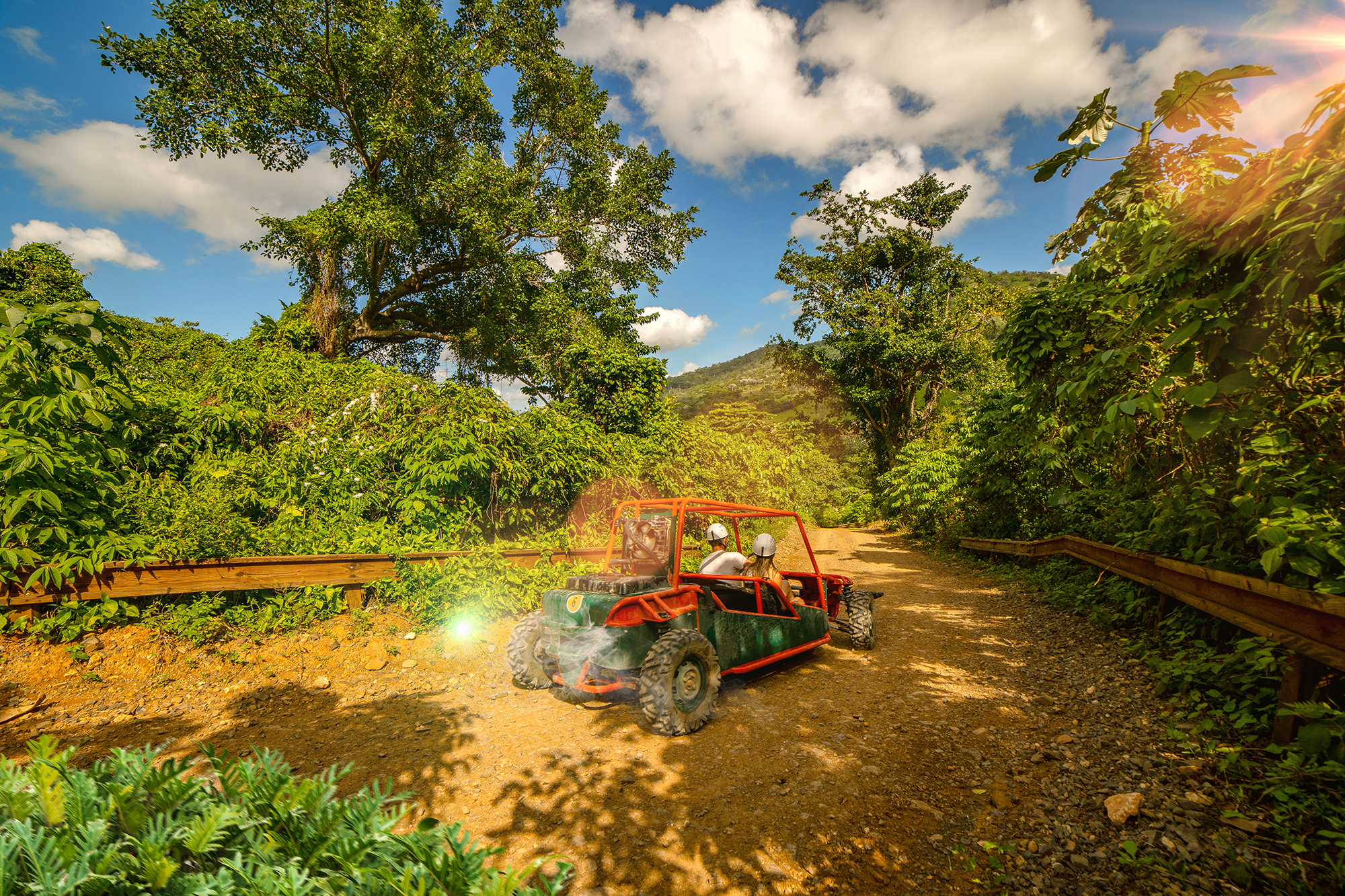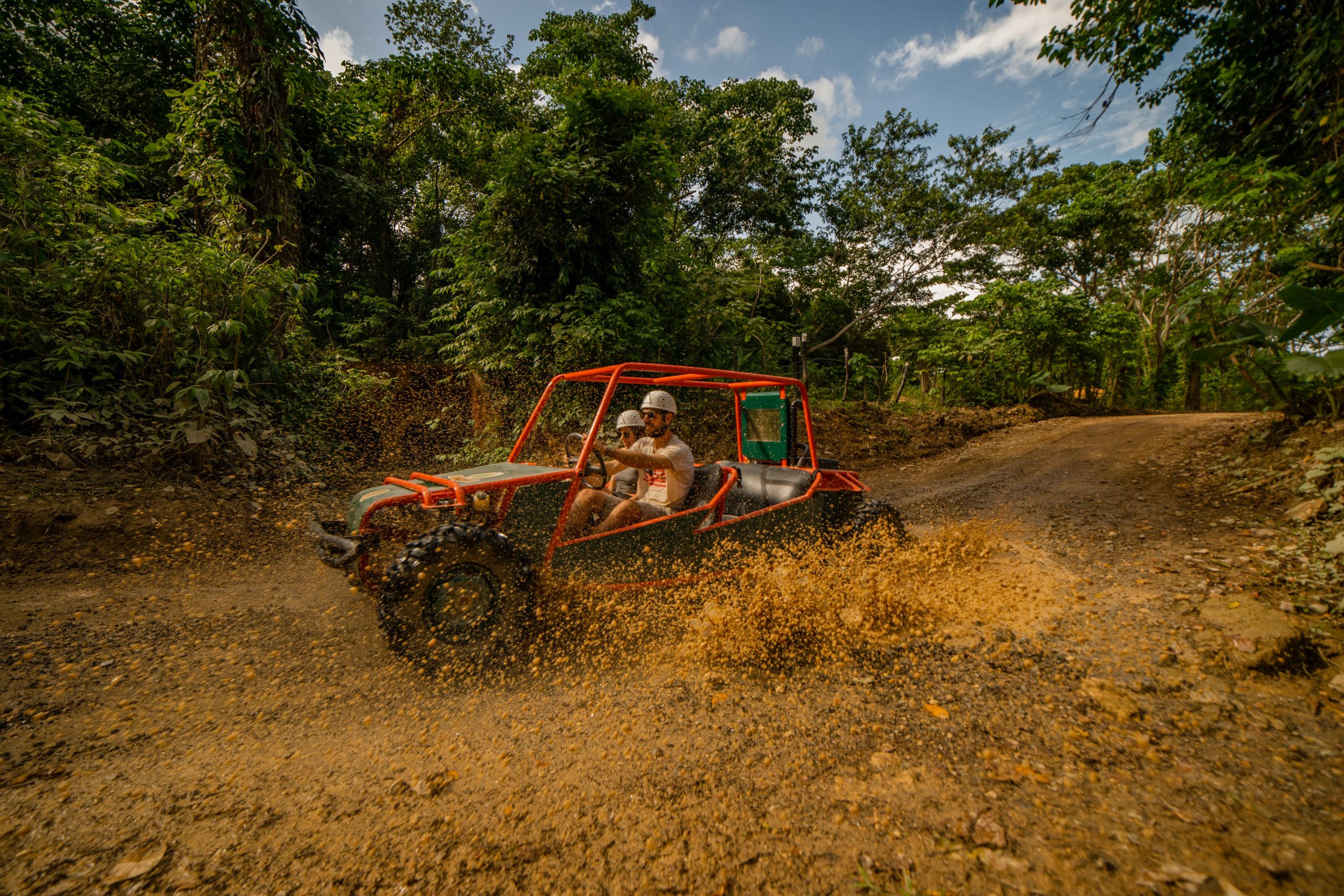Have you heard about sargassum in Punta Cana and are worried it might affect your vacation? This concern is becoming more and more common, not only among those traveling to the Dominican Republic, but also to other Caribbean destinations such as Mexico, Jamaica, and Barbados, where the phenomenon occurs in a similar way.
Sargassum is a natural and global phenomenon that can affect some beaches, but fortunately, there are solutions and alternatives. Since it moves with ocean currents, it is not present all the time nor everywhere, meaning it’s possible to find beaches free of seaweed.
In this article, you’ll learn what sargassum is, where it comes from, its causes, and what is being done in Punta Cana to control it.
What is Sargassum?
Sargassum is a floating seaweed found in large quantities in the Atlantic Ocean. It forms its own ecosystem, serving as a habitat for fish, turtles, and seabirds, thus playing an important role in maintaining natural balance. The issue arises when sargassum reaches the shores in excess, accumulating as unpleasant masses of algae.

On white sandy beaches like Punta Cana, sargassum buildup in the shallow waters and along the shore can alter the crystalline turquoise color of the sea. When decomposing under the tropical sun, it releases a strong odor that can disturb visitors.
Although sargassum in the Dominican Republic is a natural and global phenomenon, its concentration on the shore can become an inconvenience for tourists. However, it is important to remember that despite being a natural ocean cycle, constant efforts are made to control it.
Where Does Sargassum Come From and What Causes It?
Sargassum originates in the Sargasso Sea, located in the Atlantic Ocean, and ocean currents carry it toward the Caribbean and the Dominican Republic. In recent years, its presence has intensified due to several factors:
- Climate change: rising sea temperatures accelerate its reproduction.
- Pollution and nutrients: excess agricultural and industrial runoff acts as fertilizer for the algae.
- Ocean currents: transport large volumes of sargassum toward the Caribbean and the coasts of Punta Cana.
Sargassum in Punta Cana: Consequences and Response Actions
Sargassum in Punta Cana can have various visible consequences for travelers, especially during peak accumulation months:
- Visual impact: it covers white sand beaches and alters the turquoise color of the water.
- Unpleasant odor: decomposing seaweed emits a strong smell.
- Impact on water activities: swimming, snorkeling, and diving near the shore can be affected.
- Uneven distribution: not all beaches are equally affected—some remain almost sargassum-free.
Fortunately, sargassum is not present every day or on every beach. Most of the time, local authorities and resorts manage to keep the situation under control with measures such as:
- Daily manual and mechanical cleaning.
- Installation of floating barriers to divert seaweed before it reaches the shore.
- Cooperation between the government and the tourism sector to protect the tourist experience in Punta Cana.
Thanks to these efforts, even in peak seasons, there are always sargassum-free beaches in the Dominican Republic, allowing visitors to enjoy the Caribbean Sea at its best.
Sargassum-Free Beaches in the Dominican Republic: Travel Tips
If you’re planning your trip, here are some tips to make the most of your vacation:
- Check live reports and webcams for real-time beach conditions in Punta Cana.
- Explore less affected beaches, such as Playa Macao in Punta Cana or Bayahibe on the island’s southern coast.
Don’t let sargassum ruin your experience—the situation is usually under control, and most days you’ll find beautiful, clear beaches.
Vacations Beyond the Beach: Alternatives to Enjoy Punta Cana
Even if sargassum appears on some beaches during your stay, your vacation doesn’t have to be ruined. Punta Cana offers many alternatives for unforgettable days away from the sea.
One of the best options is La Hacienda Park, an adventure park surrounded by nature where you can enjoy unique experiences: buggy rides, the longest zipline in the Caribbean, cultural safaris, horseback riding, and a rich Dominican buffet with delicious local cuisine.

A day at La Hacienda Park is the perfect alternative for those seeking a different experience full of fun and adrenaline, completely free of seaweed. That way, even on days when the sea has sargassum, you can ensure an unforgettable adventure in an authentic Dominican setting.
Sargassum Problem? We’ve Got You Covered!
Want to know more about sargassum-free beaches in the Dominican Republic and alternative activities? Drop your question in the comments and plan your trip with peace of mind!

























